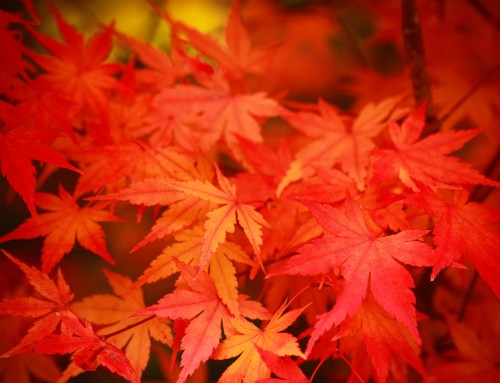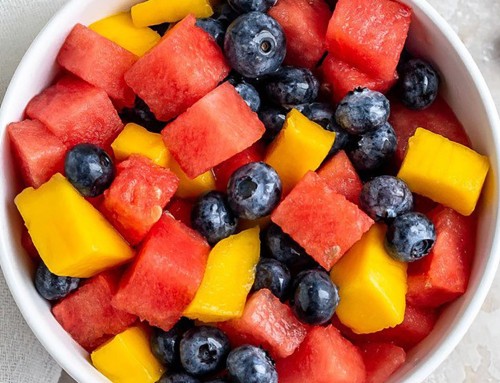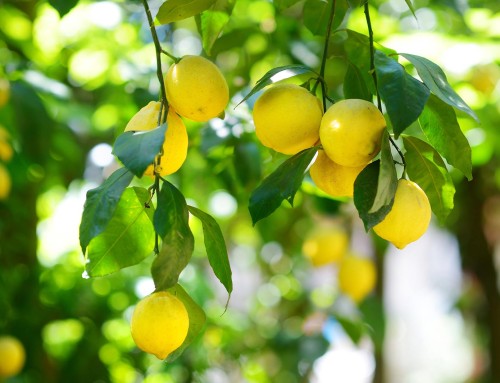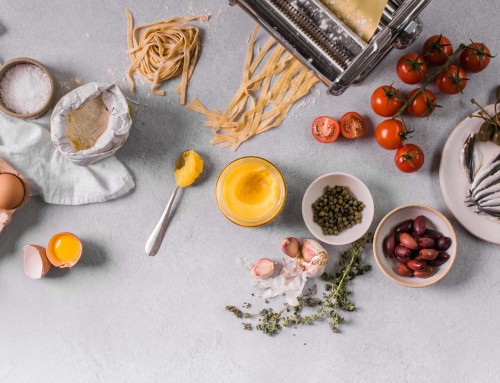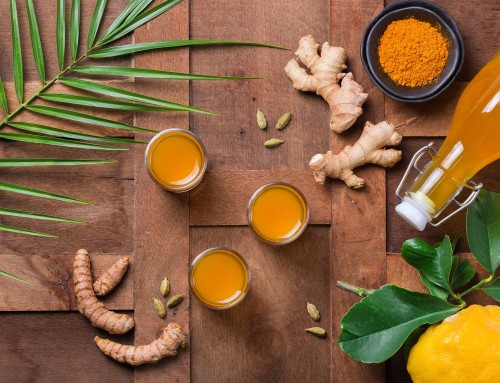
This Summer, Cool Your Skin with Water
Original article published by Maharishi AyurVeda Products, USA
It’s summer and most of us breathe a sigh of relief as the ageing winter weather passes. Yet summer has its own set of beauty risks. Increased heat can bring an imbalance of Pitta dosha, the mind-body operator that governs hormones, digestion and other metabolic processes in the body. It’s important to stay cool and hydrated to help prevent summer breakouts and rashes.
Here are a few tips for keeping your skin looking great in summer.
Drink Cooling Spice Water
You’ve probably heard that drinking 6-8 glasses of water a day is important for flushing out toxins, and in summer it’s even more important to keep replacing fluids that may be lost to perspiration. You can get extra cooling and purifying impact from your water by adding a few herbs and spices.
Here’s a summer recipe:
Cooling Summer Water
Ingredients:
- 2.25 litres of water
- ¼ t. fennel seed
- 2 dried rosebuds
- 1 clove bud
Directions:
- Boil water for two minutes.
- Take it off the heat and add fennel, rosebuds, and clove.
- Store it hot inside a thermos, but before drinking pour it into a cup and let it cool to room temperature.
The plants in this formula not only cool Pitta dosha, but if used over time they help stimulate digestion and cleanse the microchannels of the body, allowing the water to hydrate the deeper layers of the skin.
Avoid Drinks that Dry Out Your Skin
Alcoholic drinks tend to dehydrate the body and affect the skin by compromising liver function and are better avoided. It has been understood that caffeine is a diuretic and causes dehydration but this is has been shown to be a misunderstanding. However excessive intake of caffeine can affect the skin by compromising liver function.
When the liver becomes overloaded, it can no longer do its job of screening out toxins from the nutritive fluid. That’s the point when ama (digestive toxins) and more harmful impurities, start to circulate to the tissues and organs of the body. And one of the first signs of toxins in the liver is dull, dry, lifeless skin.
Ice-cold drinks are also best avoided, as icy foods and drinks diminish the digestive fire (Agni) resulting in the production of ama that detracts from healthy skin. Instead, to keep cool, treat yourself to healthy herbal tea, such as Organic Cooling Pitta Tea, cooled to room temperature.
Or invest in a juicer and try some fresh apple juice or pear juice made with sweet ripe fruits as a snack. Other cooling drinks include milk and lassi.
To make lassi, use one part freshly-made yoghurt and blend with three parts of water. Blend in a teaspoon of Organic Rose Petal Spread (or 1 tsp of Rose Water) for flavouring. Organic Rose Petal Spread is one of the most effective ways to cool Pitta dosha, quench thirst and purify the skin.
Eat Foods that Hydrate the Skin
Eat a diet that helps cool Pitta dosha and helps purify and hydrate the skin. Start by eating at least one sweet, juicy fruit a day.
Ripe summer fruits such as peaches, nectarines, plums and pears are exactly what your skin craves in the hot season. Not only do they provide an excellent source of moisture, but they cool Pitta dosha and help purify the skin at the same time. Tree-ripened, juicy summer fruits convert almost immediately into ojas, which shows up in your skin as a radiant complexion.
Massage with Cooling Herbal Oils
People think of massage as heating, but if you use Cooling Pitta Herbal Massage Oil, the self-massage will not only cool your skin but purify it as well. Specially made for sensitive skin, it’s ideal for the hot summer months.
Follow your massage with a warm but not hot bath. Add lavender and fresh rosebuds for a luxurious, cooling effect. Lubricate your skin after the bath with a good emollient that is made with natural ingredients rather than harsh chemicals.
Treat Your Skin to Herbal Mists
If you’re travelling, or just feel your skin needs a refresher in the heat of the day, try spritzing your face with Organic Rose Water to tone, cool, hydrate and protect your skin.
You’ll feel cooler and your skin will thank you.
Use Products that Hydrate Naturally
When you’re choosing products to cleanse and hydrate your skin in summer, be sure they don’t have harsh chemicals or preservatives that will only dry out your skin.
Revital Skin Care Cream and Radiant Skin Oil are not only completely natural and free of chemical ingredients; they are made with such an extraordinarily high content of essential oils that they are self-preserving. These gentle yet highly effective skin-care products smooth out wrinkles and hydrate the skin as they purify and cleanse. They also help nerve regeneration and give you a cool, calm feeling to face the day
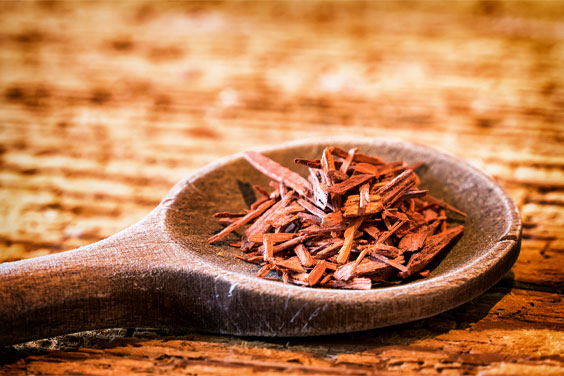
Sacred Sandalwood: The Epitome of Excellence
Q: Where does Sandalwood come from?
A: Sandalwood comes from the Sandal Tree, known scientifically as Santalum album (of the Santalaceae family) and in Sanskrit as Chandana. In English, it is called White Sandalwood or Yellow Sandalwood, depending on the age of the tree.
An evergreen tree that grows only in the southern areas of India, Indonesia and northern Australia, it grows to a medium height of 30 feet. After 15-20 years the oil collects in the heartwood or the centre of the trunk, but as the scent of sandalwood grows stronger, the colour of the wood becomes more yellow. The value of the wood climbs higher the older the tree. It is considered at its peak at 60 years old.
When harvested the heartwood is ground into a powder and then steam-distilled into oil for use in cosmetics, soaps, candles, medicines and perfumes. The hard, yellow, outer wood is mostly used for carving statues and decorative articles such as combs, beads and boxes.
Q: Why is the Sandal tree so important to the Vedic tradition?
A: The Sandal tree is highly regarded in the Vedic texts, and the heartwood is considered to be sacred. It is said that Chandana, or Indra’s Sandalwood tree, scents the whole of paradise with its fragrance. Sandalwood is considered the epitome of excellence, imparting fragrance even to the axe that cuts it. For this reason, anything that is excellent is referred to as Chandana. It is used in sacred ceremonies and to purify holy places.
Q: What are the health benefits of Sandalwood oil or powder?
A: When used externally, Sandalwood oil or paste (made from mixing water with a powder of the heartwood) has a calming, cooling effect on body and mind. It is said to help relieve fever and burns and stops excessive sweating.
In general, it reduces Pitta dosha and helps balance the body after overexposure to the sun. The oil or the paste is known to help protect the skin from diseases such as infectious sores, ulcers, acne and rashes.
Sandalwood powder helps smooth and cool the skin, and can be made into a paste, lotion or soap for cleansing, calming and hydrating sensitive or ageing skin. When taken internally sandalwood acts as a disinfectant, diuretic, expectorant and sedative. It is bitter, sweet, astringent and cooling. Sandalwood helps to balance the circulatory, digestive, respiratory, urinary and nervous systems.
Q: What is the effect of Sandalwood in aromas or incense?
A: Sandalwood incense is made from rolling the paste of the sapwood on bamboo skewers by hand. The scent of Sandalwood essential oil or Sandalwood incense clarifies the mind and helps to awaken intelligence, and is often used as an aid for meditation. It calms the mind, soothes stress and nervous tension, and uplifts the mood. It is said to enliven courage, purpose, strength and happiness.
Q: Sandalwood is reportedly on the endangered list of trees in India. What are the challenges involved in obtaining good sandalwood?
A: The Sultan of Mysore declared Sandalwood to be a royal tree in 1792 and every Sandalwood tree in India is still under the protection and ownership of the Indian government today, even when grown on private land. The individual who owns the land receives 75% of the proceeds in return for planting and protecting the tree until it reaches maturity.
Because cultivation of Sandalwood trees is challenging and due to increased demand in medicines, perfumes and cosmetics that contain Sandalwood oil, and due to the decreased availability as smugglers cut down trees and export them illegally, prices have skyrocketed in recent years. At this time it is illegal to export the wood from India, although the oil can be exported.
Q: What Maharishi AyurVeda products contain Sandalwood?
A: Sandalwood is an ingredient in Sandalwood (Pitta) Soap and Khus (Vetivert) Soap where it helps repair dry, damaged complexion and increases health and lustre to ageing skin. Other topical products containing Sandalwood include Rejuvenation Massage Oil for Men (MA1593) (1.5%) and Joint Soothe Oil (MA929) (0.2%).
Sandalwood is part of several herbal formulas, including Prostate Balance (MA1595) (10%), Detox Pitta (MA1663) (5.7%), Menopause Temperature Balance (MA1815) (3.9%). Detox (MA1010) (3%), Radiant Skin (MA926) (2.9%), Maharishi Amrit Kalash (both paste (0.34%) and tablets (1%)).
Q: What about Red Sandalwood? Is it the same thing?
A: Red Sandalwoodor Red Sanders (Rakta Chandan in Sanskrit) is a different species (Pterocarpus santalinus) belonging to the entirely different legume family (Fabaceae). It is endemic to southern Eastern Ghats of India. It does have some similar properties to White Sandalwood, being used to balance digestion and skin health, and also helps balance purification through the sweat glands and skin.
Red Sanders is used in Radiant Skin (MA926) (4.8%), and Prostate Balance (MA1595) (4%) and as a dye, as incense, and as a decorative powder in sacred ceremonies.
DISCLAIMER: The information in this document is presented for the sole purpose of imparting education on Maharishi AyurVeda and neither the information nor the products are intended to diagnose, treat, mitigate, cure or prevent any disease. If you have a medical condition or are pregnant or lactating, please consult a health professional and it is recommended that you speak with your physician before making significant changes to your diet or routine.

